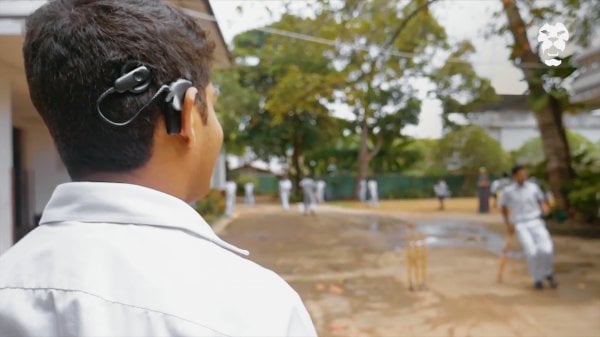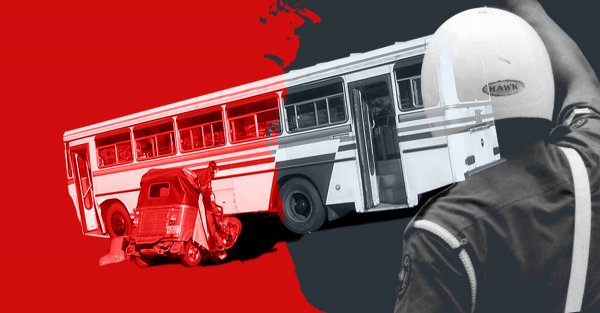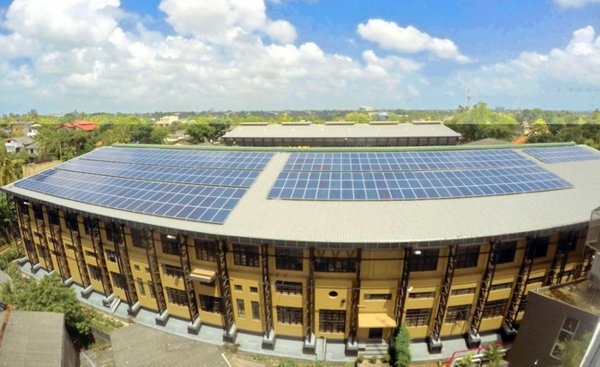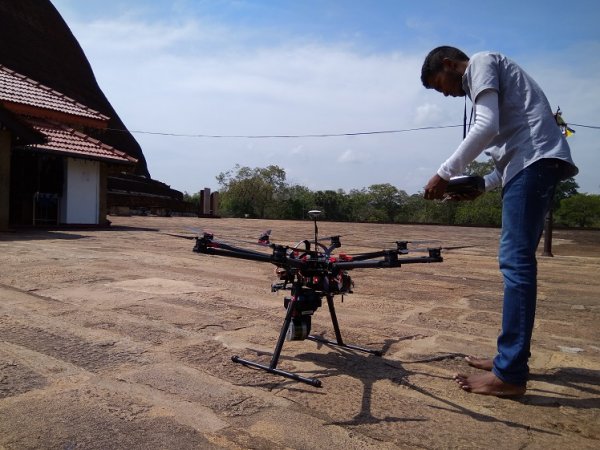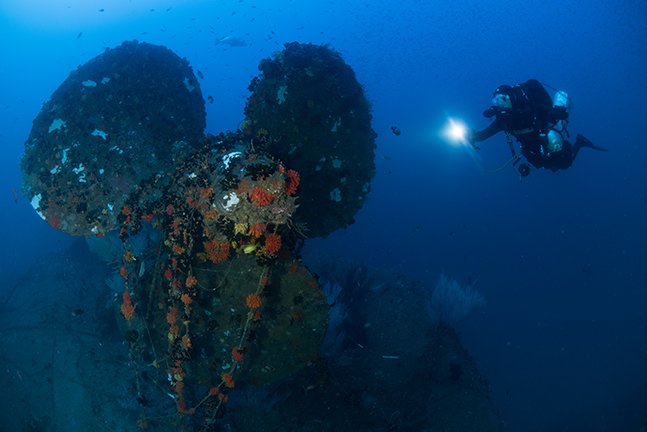
Felician Fernando is an accomplished diver, who, even at sixty, dives regularly as an instructor. And while Fernando spends most of his time diving off the beaches of Negombo, once a year—together with the family—he visits a grave at the bottom of the sea.
It all began when Fernando was contacted by a woman named Lesley Harker in 2012.
“Harker contacted me via email saying that her father had a request for me. They wanted me to take a bouquet of frangipani flowers to a gravesite at the bottom of the eastern sea,” he said.
Harker had explained that her father, Richard William Groom (89 at the time the email was sent), had been a deckhand aboard the vessel HMS Hermes, the world’s first aircraft carrier, which was commissioned by the United Kingdom.
Deployed during the Second World War, it was sunk in an attack carried out by Japanese air fleet, off the coast of Batticaloa.
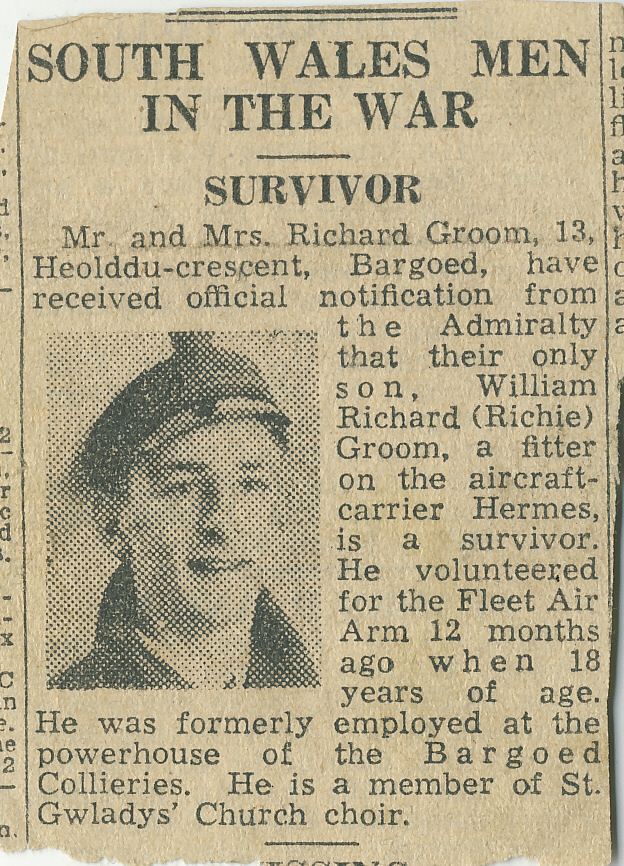
The Hermes and the Vampire
On April 8, 1942, invasion by the Japanese Empire was imminent.
On the island of Ceylon, British forces were deployed on the ground. Off the coast of Trincomalee, the world’s very first aircraft carrier– the HMS Hermes–accompanied by Australian destroyer, HMAS Vampire, had commenced its journey to the Maldives to rendezvous with the rest of the British fleet.
The British troops in the Maldives, anticipating an attack similar to the Easter Sunday raid of Ceylon just a few days earlier, were preparing to defend themselves. But as fate would have it, HMS Hermes never reached the Maldives.
On April 09, 1942, a Japanese scout plane spotted the ship near Batticaloa and attacked it with a fleet of 70 dive bomber aircrafts. The HMS Hermes was immediately sunk in the attack.

The attack by the Japanese was devastating; 19 officers, including the captain of the ship, R. J. Onslow, and 278 others lost their lives.
The HMAS Vampire was also attacked and destroyed, when sixteen 250kg bombs that were dropped on the vessel by the Japanese fleet broke it in half, sinking it within 10 minutes of the HMS Hermes.
Vampire lost its Commanding Officer and eight sailors in the attack. However, many others survived and were later rescued by a patrolling hospital ship.
Discovering The Shipwreck
It was the legendary Sri Lankan scuba diver, underwater explorer and marine biologist, Rodney Jonklaas, who first discovered the wreck of the HMS Hermes in 1967.
It was Jonklaas who founded ‘Reefcombers of Ceylon’, one of the world’s first diving clubs in 1946, later assisting the National Aquatic Resources Research and Development Authority (NARA – est. 1981) with dives, in their mission to carry out research and development on Sri Lanka’s marine resources.
According to another pioneering Sri Lankan diver, Rex I De Silva, when Rodney located the Hermes at 60 metres underwater, it was without any gear or equipment. Having identified the wreck, Jonklaas returned with scuba gear, also taking with him a .357 magnum bang-stick (an underwater firearm) for protection against sharks. He would continue to visit the site often to assist researchers, journalists and writers, and of course, movie makers.
With the Sri Lankan civil war rendering the eastern seas untraversable, the location of the wreck would disappear from the minds of many. Having being forced to abandon their homes due to the raging war, the fishermen who frequented the spot for the multitudes of fish, would not return for another decade or so. And slowly but steadily, another 30 years would pass until the Hermes was once again visited.
Enter Felician Fernando, who has the honour of rediscovering the wreckage of the Hermes when the world had forgotten it.
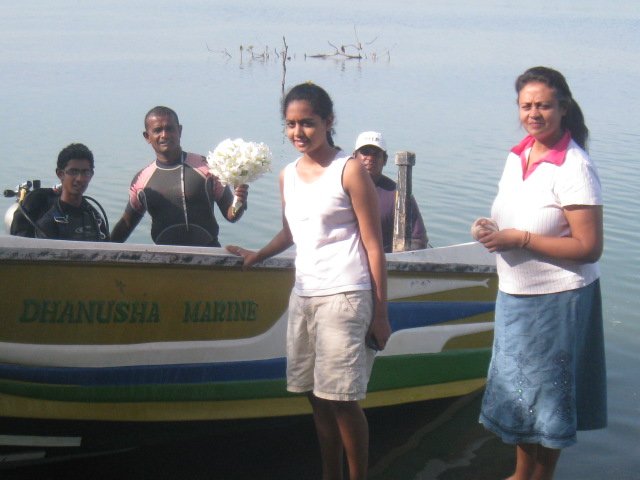
“It was way back in 1986 that I dived for the first time in my life. That was 33 years ago, when I was training to be a diving instructor. [And] it was during my studies that I got to know about HMS Hermes,” he said.
After graduating, Fernando went on to make a name for himself as a diver and an instructor. But a desire to locate the Hermes burned strongly in him. “I wanted to find something new and exciting. So I started looking for the wreck and I combed the eastern coastline starting from Trincomalee,” he said.
But his search was futile — until he found his first eye-witness: Prince Casinader, a teacher, politician and writer.
“The administrative centre of the Batticaloa district was the Kachcheri, housed in the ancient fort,” Casinader wrote in an article for the Sunday Times in 2009. “The British ships were no match for the continued waves of Japanese planes, and as the first bombs hit the deck of the Hermes, she began to sink. A touching tragic scene was the heroic stance of the ship’s captain, Captain Onslow, who as the ship was sinking, stood at the salute with the Union Jack flying, to go down with his ship, not far from the lighthouse.”
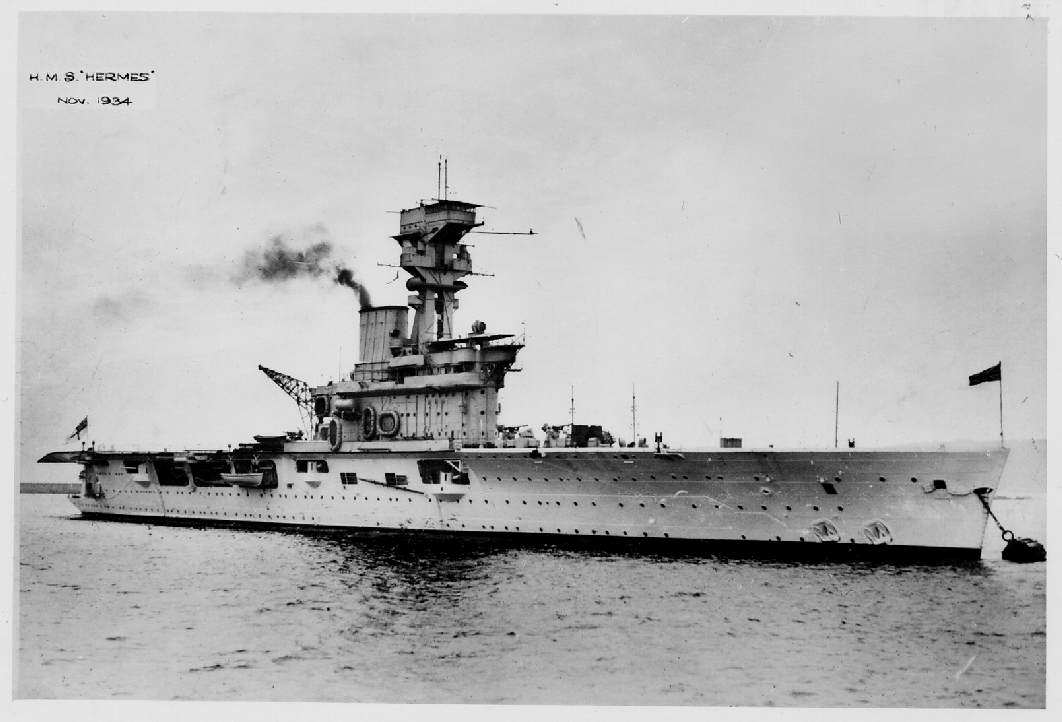
With the assistance of Casinader, Fernando travelled to Batticaloa.
“No one had any landmarks because they had lost that information during the war. The location marked on the Admiralty charts and other nautical charts were also wrong,” Fernando said.
He said he was finally able to determine the position of the wreck with the information that was shared with him by Captain Edward Jayawardene, former Commander of the Eastern Naval Area.
Fernando described the very first dive in search of the Hermes as quite dangerous and life-threatening.
“The wreckage was supposed to be lying at a depth of 60 metres — according to the information. My equipment had a lot of restrictions and would only allow me to stay a limited amount of time underwater. If I had stayed longer, I would have drifted off into a nitrogen narcosis.”
Despite the challenges, on April 15, 2002, Fernando descended 60 metres into the Batticaloa sea and stepped on a box of ammunition. He immediately realised that this was it — it was the wreckage of the Hermes.
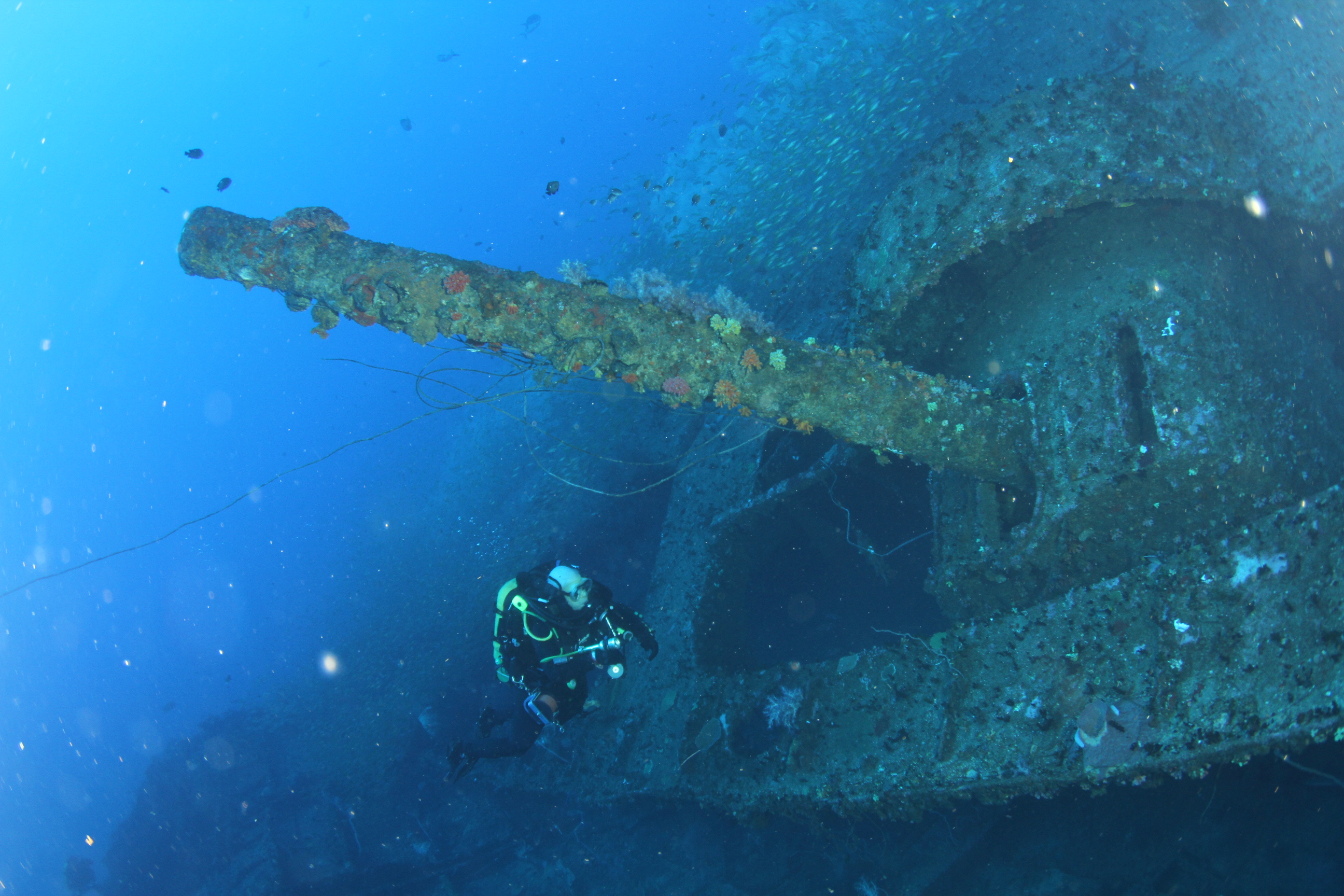
Fernando said he was surprised to see how well preserved the vessel was. “The environment had not caused any damage. I’ve made 2,400 logged dives in various places such as the Maldives, Malaysia, Singapore, Indonesia and I have never seen such beauty,” he said.
While a variety of fascinating corals and giant sea-fans had grown around and all over it, the vessel remained a pristine, untapped nest for fish. “The ship was very well intact. It had tilted portside to the ground [but] the superstructure still had most of its guns and boxes of ammunition,” he said.
“The flight deck was destroyed, however,” he added.
Missing Link
Since his first discovery, Fernando has dived to the Hermes wreckage more than a thousand times — at least 100-125 times a year with trainees and other researchers.
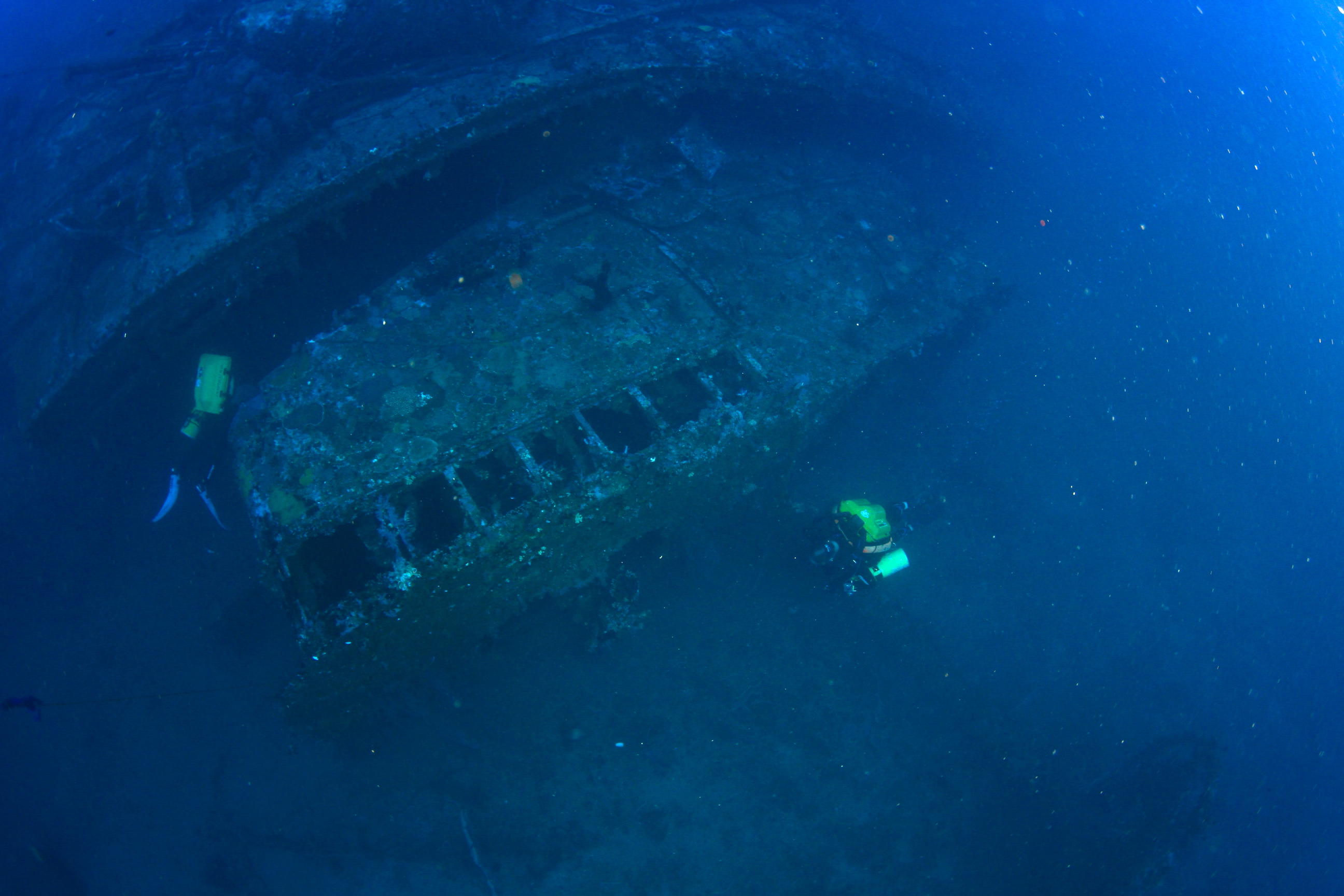
But a majority of the wreckage still remains unexplored due to its status as a British war grave. Divers are restricted from extracting any artefacts and are prohibited from entering the wreckage.
“There were over 300 approximated secondary explosions during the attack that caused the vessel to sink. Those who did not escape died due to drowning. If you shine a light through the portholes, you can see the remains of those who did not survive the incident,” Fernando said. “Hermes captain, R. J. Onslow, who refused to leave the sinking ship was not rescued, and his remains are assumed to be still within the wreckage,” he said.
Now, Fernando has his sights on HMAS Vampire, which is yet to be found.
“Vampire lost nine men [but] the rest survived,” Fernando said. “ The wreckage was never found. Last year, there was a group of Australian researchers who used sonar technology to search the area, but [were] unsuccessful. We believe that the Vampire might be at the bottom of a 900-metre trench located close to the Hermes.”
“It’s impossible to dive that deep, however,” he said. “We need more powerful sonars to locate the vessel.”


